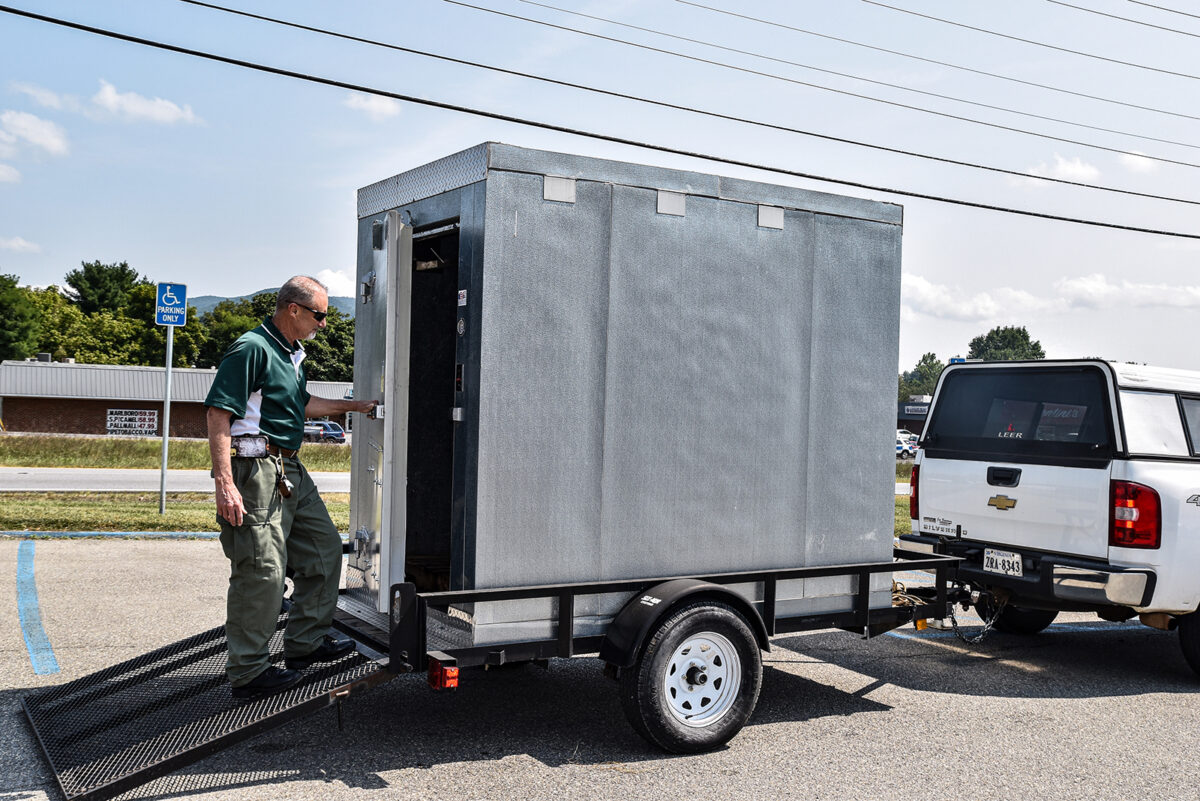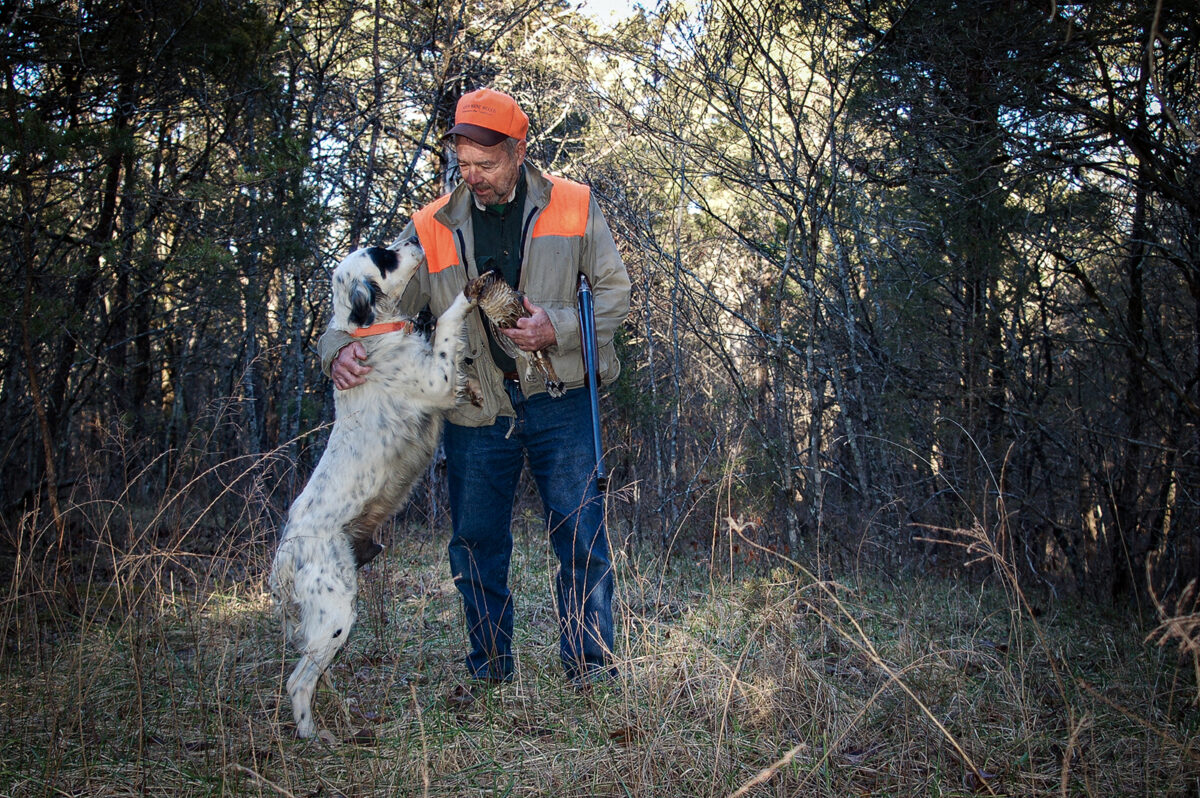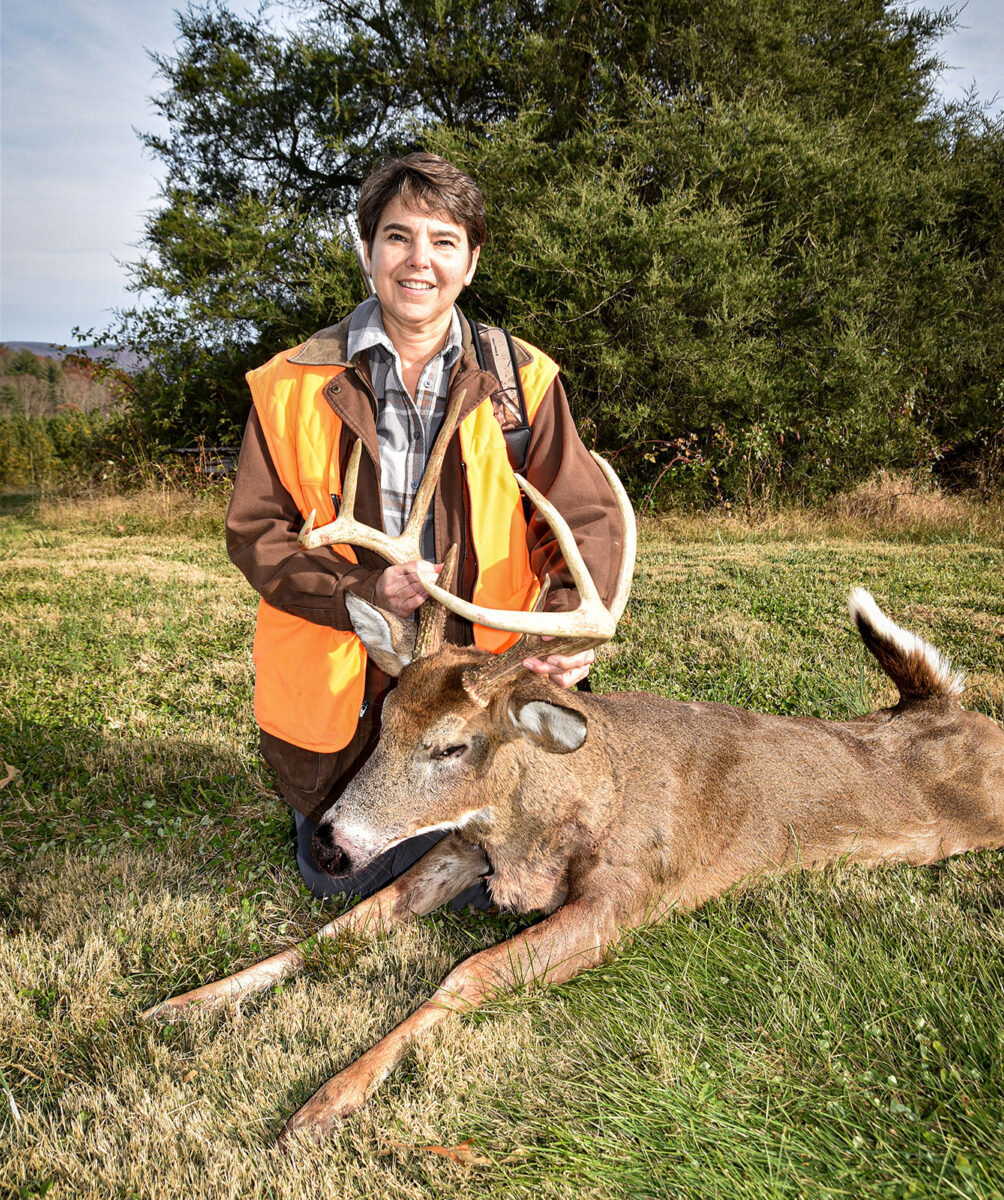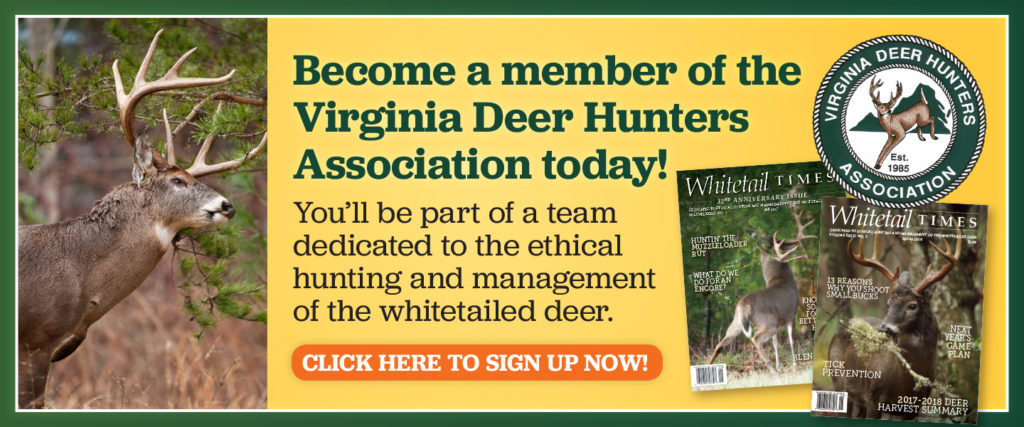Hunters, landowners, and the public all play a major role of support to meet the needs of Hunters for the Hungry Program to provide venison to those in need.
By Bruce Ingram for Whitetail Times
When Beth Leffel returned home to her family’s Botetourt County farm, she did so for a variety of reasons. She wanted to continue the conservation work her late father Jack had begun, as well as help on the spread, be with family, and of course the lure of home itself was strong too.
Jack Leffel was well-known locally as a sportsman, land manager, and especially as an upland bird enthusiast. He had long participated in the Virginia Department of Wildlife Resource’s (DWR) Deer Management Assistance Program (DMAP) to keep the farm’s deer population in harmony with the environment, and to successfully raise corn and soybeans.
So, when Beth assumed control of the farm, she knew she had to accomplish two things. The first was to immediately reduce whitetail numbers for the sake of her crops and the overall health of the habitat and deer herd. And the second was to make sure that the deer she killed (Jack taught her marksmanship) would go to good use. The DWR’s kill permits were the solution to the first issue and Virginia Hunters for the Hungry (HFTH) was the answer for the second.
Gary Arrington, director for HFTH, was immediately impressed with Beth when she contacted him.
“I felt she was someone who was interested in much more than merely shooting deer,” he said. “She wanted to effectively manage the deer herd to benefit the habitat and the deer as well. And she wanted the venison from those deer to go to a good cause—Hunters for the Hungry, as a viable way of using the resource.”
As fate would have it, another Botetourt County farmer was experiencing crop damage, and the individual likewise had gained kill permits and contacted HFTH. So Arrington arranged for one of the organization’s mobile cold boxes to be placed on the Leffel family’s land.
“It is a very fortunate situation when several farms can bring deer to a cold box so as to maximize the use of it and to provide more meals for the less fortunate,” said Arrington.
The smaller cold boxes can hold 12 to 15 whitetails, the larger ones 30 to 40, and the average trailer about 20 to 25. HFTH also strives to provide venison from local deer to local families in need. “Of course, one of the challenges is matching up local meat processors, farms with overly abundant deer, and folks in need,” Arrington said.

Gary Arrington, director of Virginia Hunters for the Hungry, with the mobile cold box that the organization used on the Leffel farm—and others—for sportsmen to donate deer.
Arrington adds that HFTH possesses some 20 of these refrigerated trailers, many of them gained through the financial assistance of other organizations such as the Virginia Hound Heritage, Virginia state chapter of the National Wild Turkey Federation (NWTF), the Farm Bureau, and other organizations. Of course, the Virginia Deer Hunters Association has long been a booster of HFTH in many ways, providing volunteerism and other support as well as precious financial gifts concludes the director.
Katie Martin, DWR’s deer/bear/turkey biologist, says DWR offers three programs for hunters interested in managing their deer.
DWR Insight
“The Deer Management Assistance Program (DMAP) is a voluntary program that allows property owners to apply site-specific management objectives to their property by allowing a more liberal harvest of antlerless deer than would be allowed under the current county either-sex deer hunting day regulations,” Martin said. “DMAP tags are only valid for antlerless deer. This program is primarily aimed at allowing landowners/hunt clubs to manage deer herds on a more local level based on site specific objectives.
“The bonus to DWR with DMAP is the plethora of deer data that we then collect from these DMAP clubs/properties. Every property enrolled in DMAP abides by rules and regulations that mandate that every deer harvested has a jawbone submitted for aging by department biologists along with collecting other biological information from each harvested deer,” Martin explained.
Martin said that other data collected includes: weight, presence of milk, sloughing/ splitting hooves, and antler measurements (spread, beam diameter, points). All of this data provides the DWR with a very robust sample size to learn about the health of deer herds across the state and to use for numerous projects/data analyses.
Martin also explained DCAP and kill permits.
“The Deer Control Assistance Program (DCAP) is another site-specific deer management program that provides the opportunity for a more liberal antlerless harvest than what is allowed under the normal county specific either-sex deer hunting regulations,” Martin said. “DCAP allows for increased antlerless harvest to assist in controlling crop depredation by deer and/or other property damage. DCAP tags are valid during any open deer season (archery, muzzleloading, and general firearms) and thus allow for the increased antlerless harvest during the open hunting seasons rather than during closed seasons.
“DCAP only applies in counties that do not have full season either-sex deer hunting regulations. DCAP is administered cooperatively through the wildlife and law enforcement divisions as a CPO must be contacted during the time when deer damage is occurring to document eligibility for DCAP during the upcoming hunting season,” according to Martin.
Martin says that DWR does not issue DCAP tags to counties with full season either-sex throughout the entire deer season since the opportunity to harvest an antlerless deer in those counties is not restricted due to season dates. For property owners experiencing agricultural or property damage caused by deer, they can contact the Wildlife Conflict Helpline toll free (1-855-571-9003) to report damage and request a kill permit from a conservation officer following a site visit.
Leffel’s Point of View
Kate explained the reasoning behind her opting for the kill permits.
“Once we decided we needed to reduce the herd, I couldn’t in good conscience not use the deer,” she said. “We called some friends to see if anyone could be on standby to get a deer after I killed it, but my family and our friends couldn’t eat all the ones we needed to harvest, so that’s when I thought of Hunters for the Hungry. My dad always emphasized that everything killed had to be eaten and he would have been very unhappy with me if that venison had been wasted.”
Beth’s late father Jack Leffel had a profound influence on her, and the wisdom he passed down to her is much in her thoughts.

The late Jack Leffel was an avid grouse hunter and his daughter Beth’s mentor in multiple ways.
“Daddy knew how to manage land for both crops and wildlife,” she said. “He was especially interested in improving our land for deer, turkeys, and quail. One of the things he really enjoyed creating were strips of cover where animals could find both food and cover. He always had guidelines for how many deer (including their size, gender, and number) could be killed per season, which is why the DMAP program was so important to him.
“I spent a lot of time with him field dressing deer and removing and aging jawbones. He often said a good field dresser could get the job done by feel. By the time I was eight, I was helping him dress a deer,” Beth said.
At about that time, Jack taught Beth how to hunt squirrels with a .22 rifle. At age 9, she was allowed to accompany Jack and his friends on deer hunts, although she was not yet permitted to tote a gun. By age 10 she had proved her prowess with a .22 while squirrel hunting (her father had insisted that she become an accomplished squirrel hunter first) and was ready to actually pursue whitetails.
So, with her 243 rifle, a girl and her dad went afield with the quest of harvesting her first whitetail. The duo didn’t punch a tag that first time, but by the end of the general firearms season Beth had killed and field dressed a whitetail
“At that time not many girls hunted, so Daddy’s hunting companions sort of made me the pet,” she recalled. “Each one would take me to his favorite stand.”
Now 52 years old and a scientific consultant for pharmaceutical companies developing vaccines and drugs for bio-tech defense, Beth attributes her marksmanship skills to her father. When Jack was teaching her to safely handle and shoot a gun, he positioned targets every 25 yards between distances of 25 and 250 yards. Jack also taught her how to estimate distance and to understand such concepts as velocity and drop. Beth modestly told me that all the deer she killed with her rifle were “under 300 yards,” but a good number were more than 200 yards distant.
Conservation Easement on Family Farm
Some 100 acres of the Leffel farm, which borders the James River, is under a conservation easement.
“Another important thing to Dad was to protect the family farm, its riparian zone, and the water quality of the James River,” Beth said. “That’s why we went through the process to place a conservation easement on our place. Dad initiated the process, but mom and the three kids were in favor of it, too. It was very important to him that we understood and approved his motives for the easement.
“We’ve continued his way of sustainable farming with an emphasis on the no-till method and no runoff reaching the river. We’ve also made sure that there continues to be a sizable riparian zone. Dad’s stress on managing our farm scientifically is what I think turned me into a scientist. I think that emphasis on science also helps me as a hunter—to have a rational approach to taking a shot and not panicking or becoming reckless.”
Fine Buck
Beth’s herd management efforts paid off with her killing a fine eight-pointer recently on the family farm. I asked her if she had seen the broadbeam before and she said, “Actually, I think that was the buck I missed during bow season. I’d been looking to get him for a while during both bow and muzzleloader seasons. Finally, I decided the way to maybe do so was to go back to a fencerow where I used to set up when I would hunt before heading for high school. The fencerow runs from a woodlot across a field and continues to a soybean field where does feed in the evening. Part way across the fencerow is a red cedar that offers really good concealment. That’s where I decided to set up that evening.”

Beth Leffel with a fine buck she killed on her family’s Botetourt County land. Beth is serious about her deer management program and works just as hard to be a good steward of the land.
At 5:07 p.m., the buck came marching across the opening as he headed toward the does, and simply stated, Beth dropped him. Her dad would have been proud of her.
Bruce Ingram lives in Fincastle, Virginia with his family. Ingram is a serious whitetail hunter and fisherman. His hunting and fishing articles have been published in state, regional and national publications.
©Virginia Deer Hunters Association. For attribution information and reprint rights, contact Denny Quaiff, Executive Director, VDHA.


